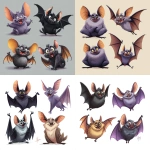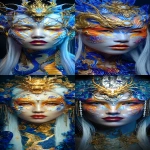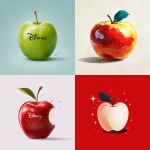Explore the Best AI Image Gallery

AI: The Graphic Designers New Muse
The world of graphic design is undergoing a seismic shift, fueled by the burgeoning capabilities of artificial intelligence (AI). This powerful technology is no longer confined to the realm of science fiction; its actively reshaping how we create, collaborate, and perceive visual communication.
Unveiling AIs Creative Potential
From generating stunning visuals to streamlining design workflows, AI offers a plethora of possibilities for graphic designers. Lets delve into some key applications:
1. Content Creation
- AI-powered tools can generate original artwork, logos, and even complete marketing collateral based on user-defined parameters.
- Text-to-image generators like DALL-E 2 and Midjourney enable designers to translate textual descriptions into captivating visuals with unprecedented ease.
2. Design Automation
- Repetitive design tasks, such as resizing images or creating social media graphics, can be automated using AI algorithms, freeing up designers for more creative endeavors.
- AI-driven design assistants can offer suggestions and refinements based on established design principles and user preferences.
3. Personalized Experiences
- AI can analyze user data to personalize design elements, tailoring visuals and messages to individual preferences and demographics.
- This level of customization enhances engagement and creates a more immersive brand experience for consumers.
Navigating Ethical Considerations
While AI presents exciting opportunities, its crucial to address the ethical implications associated with its use in graphic design:
1. Copyright and Ownership
Questions arise regarding the ownership of AI-generated content. Who holds the copyright—the user who provides the input or the AI system itself?
2. Bias and Fairness
AI algorithms are trained on massive datasets, which may contain inherent biases that can perpetuate unfair or discriminatory representations in design.
3. Transparency and Accountability
The decision-making processes of AI systems can be opaque, making it challenging to understand how designs are generated and identify potential issues.
Shaping the Future of Design
As AI technology continues to evolve, its influence on graphic design will only intensify. Heres a glimpse into potential future trends:
1. Democratization of Design
AI-powered tools will empower individuals with limited design experience to create professional-quality visuals, democratizing the creative process.
2. Immersive Design Experiences
AI will enable designers to craft interactive and immersive visual experiences that transcend traditional mediums, blurring the lines between physical and digital realms.
3. Collaborative Creativity
AI will facilitate seamless collaboration between designers, clients, and stakeholders, fostering a more inclusive and iterative design process.
Conclusion
AI is poised to revolutionize graphic design, offering unprecedented opportunities for creativity, efficiency, and personalization. By embracing its potential while navigating ethical considerations responsibly, we can unlock a future where AI empowers designers to create truly innovative and impactful visual experiences.







](https://images.ai-img.art/thumbnails/150/5197af8969d850e2a43e141d41e482ccbceedebceb2a4caf9f098f943f9d1b0f.webp)





](https://images.ai-img.art/thumbnails/150/485c8b1c747827bdc9a962f8a1919b3c259b18dd263b260208a1eae19fb85e07.webp)


](https://images.ai-img.art/thumbnails/150/3020b8c2b6d9be07e042357107af1de10deb274a41d2b0f332684ad4b532a702.webp)

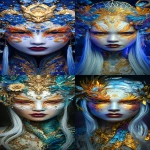




](https://images.ai-img.art/thumbnails/150/8d1fe5a7a49cfc96747182431a853357913286d89258383caab2d3b4681afcb5.webp)





](https://images.ai-img.art/thumbnails/150/269414b0e541026702e9e67c67602c96162f37ff460a388b3b36314c8fc936dd.webp)



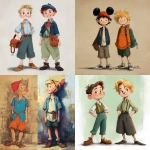
](https://images.ai-img.art/thumbnails/150/2fbd98ecfc425cfc1597779121e1c0305437067779e9c471eb64ff9615d5be98.webp)
